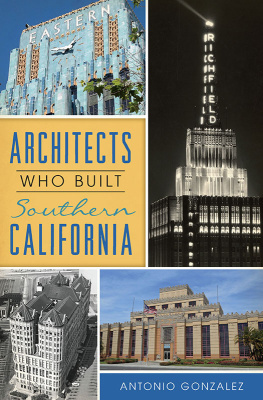For Rula. Again and always.
And for Emma and Charlotte.
For the first time.
SUICIDE IS NEVER AN EASY DEATH. ITS DETAILS can be simple, its execution effortless, even graceful. But the pain that incites it in the first place, the anguish that breeds the longing for self-destruction, never fades. It stands out on the soul like a welt on tender skin, aching and raw. Even after the deed is done, the mark remainsa last, terrible legacy of a life lived in torment.
The sad, strange suicide of Francesco Borromini was such a death, as complex and as peculiar as the man himself. At once abrupt and protracted, impulsive and deliberate, his death stunned his small circle of intimates by its curious mix of recklessness and calculation, just as the churches and palazzi he designed over his three decades as an architect startled Rome by the power of his demanding, idiosyncratic genius.
His passing marked the end of an extraordinary career, one that would have made him the undisputed architect of Rome and the founder of the era known as the Baroque had it not been his fortuneor misfortuneto have lived during the lifetime of an artist whose acknowledged talent, worldwide reputation, and enormous success bedeviled Borromini to the very end: Gianlorenzo Bernini.
This is their story.
The two men could not have been more different. Unlike the subtle, gracious, diplomatic Bernini, who moved easily through the courts of popes and princes, Borromini found it difficult to sustain relationships with both his patrons and many of his peers. He lived quietly, never marrying or fathering children. Some speculate that he was gay. He never amassed a large personal fortune. He didnt have a wide circle of friends. When he died, his passing wasnt mourned by manycertainly not by Romes elite, who found him difficult and argumentative, inflexible and quick to take offense. Even in a city used to dealing with temperamental artists, Borromini was an anomaly.
Yet when he invited death, at the last moment he rebuffed it. When it came, he found he was not ready. He would die as he had lived and worked: on his own terms and for his own convoluted and very personal reasons.
The few souls who did mourn his deathhis servants, his workers, a handful of friendswere bewildered and grief-stricken by the self-destructive compulsions of the cavaliere. But for Borromini, there was a lucid, even poetic aspect to his suicide, just as there always was in his architecturethough not everyone saw it or understood it.
The place where Borromini was buried, the church of San Giovanni dei Fiorentini, is a traditional Roman neighborhood church. It is stately but not imposing, grave but not commanding, neither large nor magnificent in a city bursting with churches that are both. Commissioned in the sixteenth century by Pope Leo X, a member of the Medici family, for the Florentines, who for generations lived in this neighborhood near the Tiber, San Giovanni stands near the north end of the Via Giulia, just where the river makes its lugubrious turn south. Begun in 1509 from a design by Jacopo Sansovino (before he left Rome for Venice) and built of traditional flat Roman brick (now gray with age and grime), San Giovanni is dedicated to Saint John the Baptist, the patron saint of Florence. It sits in a part of Rome that by the nineteenth century had, in mile Zolas words, fallen into the silence, into the emptiness of abandonment, invaded by a kind of softness and clerical discretion.
Visiting the church, its clear why it has been called so large a church along so terrifying a river. It is wedged into a narrow sliver of land whose constricted dimensions must have demanded a good deal of resourcefulness from the builders: When it was built, its altar end jutted out over the Tibers riverbed; the stone piers supporting it had to be sunk deep into the muddy shoreline. The result is a church that even now clings tenaciously to its place, like an old, nearly forgotten watchdog that knows he is no longer needed but nonetheless refuses to cede his place at the door.
San Giovannis two noteworthy architectural details are its elongated, crownlike dome, designed much later by the preeminent architect in Rome at the time, Carlo Maderno, and early on nicknamed the confetto succhiato half-sucked sweetby residents of the neighborhood, and its curious lantern, a tall, cylindrical shaft of slender windows that alternate with equally narrow stone buttresses coiled at their base like tightly wound ribbon. This unusual concoction was designed by a Lombard stonemason who worked as Madernos assistant, a young man named Castelli, who soon began calling himself Francesco Borromini.
Borromini knew this church well. It was one of the earliest buildings he worked on with Maderno, and the churchs grandiose Falconieri chapelits convex high altar, a fantasy in marmi mischi (precious materials of brick red travertine and gilding) that presses out into the congregationcelebrates John the Baptist. It was one of Borrominis last great commissions before he died.
For most of his life, Borromini lived in a house next to San Giovannis high, unwelcoming walls; he was familiar with the fashionable Via Giulia, the boulevard created by Pope Julius II early in the sixteenth century, and the shadowy tangle of streets of small houses stuccoed in the traditional Mediterranean colors of ocher, umber, and dun that twist out from it like cracks in glass. He knew the sounds of shouting river workers and bickering shopkeepers, the lingering odors of fetid water and rotting garbage, just as he knew the traditions and rituals of San Giovanni, which included the annual Easter blessing of the lambs. His lonely figurealways dressed in black, like the chief mourner at a funeralwas well known to the hatters, trunk makers, locksmiths, tailors, grocers, and booksellers who had shops throughout the area.
It was in this sestiere, in the house where he lived, soberly and alone, that Borromini died early on the morning of August 3, 1667.
His suicide seemed suddenimpetuous and unpremeditated. But Borromini had taken the first steps toward it years before, during the final, dispiriting phase of his career. A frustrating series of unfinished projects had bedeviled him for nearly a decade. In 1657, as Bernini was working on the breathtaking colonnades in St. Peters Square and creating the Cathedra Petri, Borromini was embroiled in increasingly heated arguments with his patrons. He quarreled with the Pamphili, one of Romes preeminent papal families, over the church of SantAgnese in Agone, which was to be the centerpiece of the clans ambitious rebuilding campaign for the Piazza Navona. The conflict became so acrimonious that Borromini quit the building site in a misguided attempt to force the family to see things his way. The tactic backfired. Rather than compelling Prince Camillo Pamphili, the nephew of Pope Innocent X, Borrominis former papal patron, to see his error and apologize, it incited his dismissal.
At roughly the same time, the Oratorians of Saint Filippo Neri, a reforming religious order that emphasized the inspirational role of music in religion, also sacked him. Borromini had been hired to complete their oratorya tall, oblong room designed for choral servicesthat stands to the left of their church of Santa Maria in Vallicella along what is now the Corso Vittorio Emanuele. But the Oratorians were so alarmed by Borrominis behavior that they withdrew their support, giving the commission instead to Camillo Arcucci, an architect of more conservative, and more easily controllable, temperament. Borromini was incensed. In retaliation for this slight to what Joseph Connors calls his stimolo dhonore, he transferred his anger to his contract, given to him by Pope Innocent X, to install the bronze doors and high altar at San Giovanni in Laterano, one of the great churches of Rome. Without warning, Borromini stopped work at the Lateran and sent word to Innocents successor, Pope Alexander VII, that he refused to return to work.













